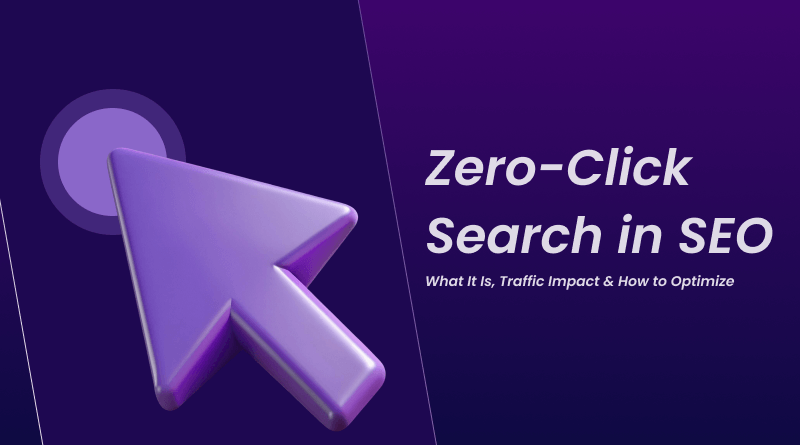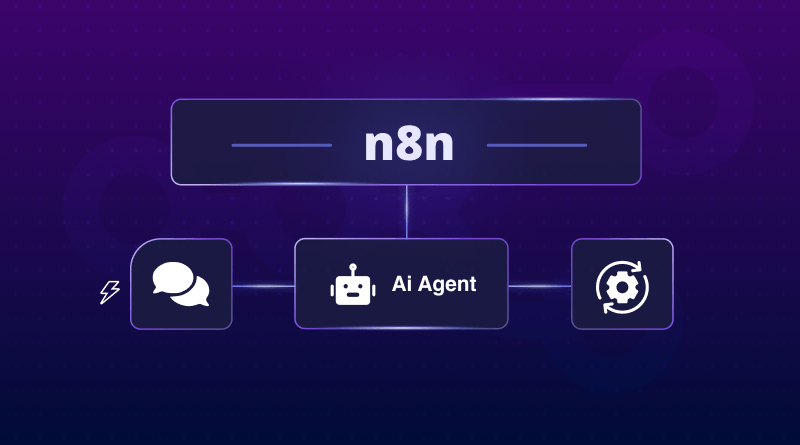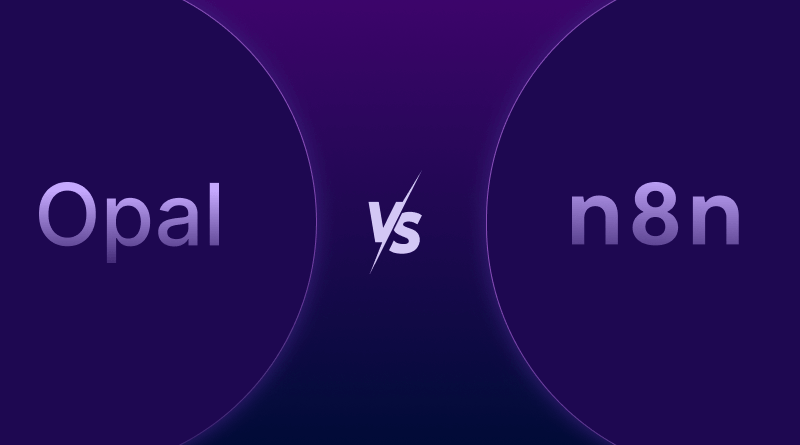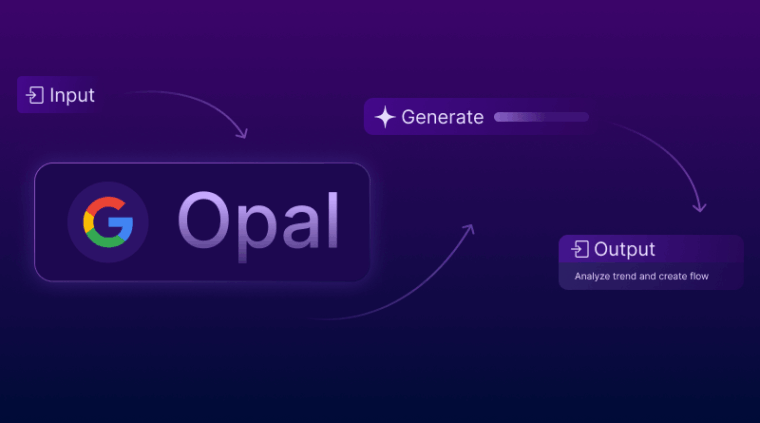
Google Opal is Google’s new AI tool that helps you create and automate content without any coding. You can use it to write blogs, plan social media posts, create images, and manage your creative workflows all from one place.
Launched globally in late 2025, Opal combines Google’s best AI models like Gemini (for text) and Imagen (for visuals). Together, they help you turn simple ideas into full blog posts, image prompts, or even short video scripts automatically.
Why is Google Opal trending right now?
Most social media marketers use too many tools: one for writing captions, one for making images, and another for posting. It takes extra time and breaks their focus.
Google Opal fixes this by acting like a creative assistant that connects everything. You can build your own “mini-apps” that do multiple steps for you, like writing a blog, making social posts, and creating matching visuals all at once.
Here’s what you’ll learn in this guide:
- What Google Opal is and how it works
- How it automates blogs, social posts, and visuals
Pro tip:
If you use automation tools like n8n, you’ll get even better performance with our
n8n-optimized VPS.
Simplify Your Workflow: How Google Opal Unites All Your AI Tools
Most content writers use multiple tools: one for writing, another for visuals, one more for SEO, and possibly another for posting. Switching between all of them wastes time and breaks your writing flow.
Google Opal solves this problem by acting as a workflow builder and AI director. It allows you to connect different AI tools – known as “agents” into one smooth, automated system. Instead of switching between apps, you can build a single mini-app inside Google Opal that manages the full process.
For example, Google Opal can connect to Gemini for writing, Imagen 4 for creating images, and other AI tools, all working together in a single chain. This means you can automate your entire content workflow in one place.
Google Opal is more than just a writing assistant – it’s a content automation engine. You can create custom mini-apps that write full blog posts, create SEO details, and even repurpose content for social media – all from one input.
1. The “Blog Post Factory” Mini-App
This app automatically creates a complete blog post.
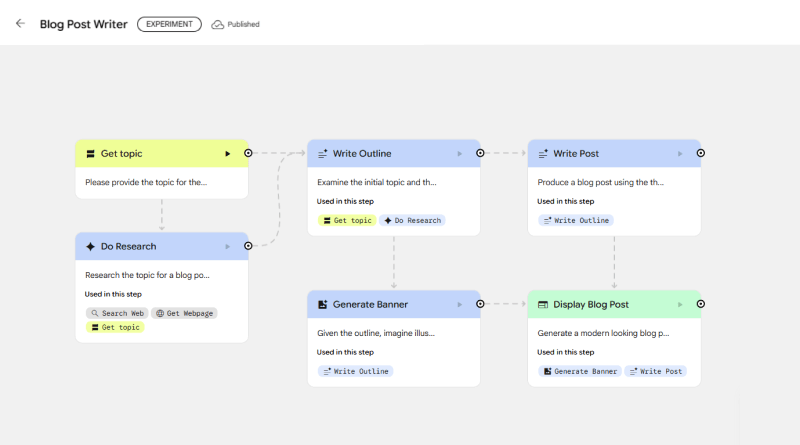
Process (AI Chain):
- Node 1 – Gemini: Creates a detailed blog outline.
- Node 2 – Gemini: Expands the outline into a full, SEO-friendly article.
- Node 3 – Gemini: Writes an optimized meta description for search engines.
Output: A complete blog draft and meta description ready to publish.
This mini-app helps you create full-length blog content in minutes, perfect for marketers or agencies managing multiple brands.
2. The “Content Repurposer” Mini-App
After writing your blog post, you can use this app to turn it into ready-to-share social media content.
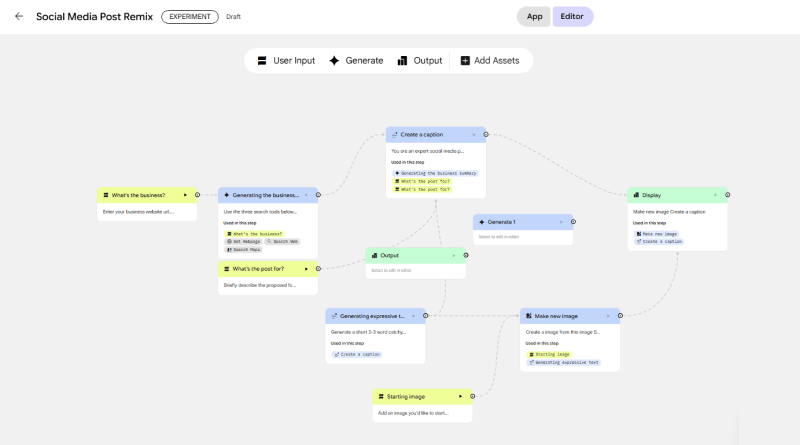
Process (AI Chain):
- Node 1 – Gemini: Summarizes the blog post into a short version.
- Node 2 – Gemini: Writes three tweet variations.
- Node 3 – Gemini: Creates a professional LinkedIn post.
Output: A set of social media posts and captions you can publish instantly.
This automation saves hours of manual rewriting while keeping your content consistent across platforms.
How Google Opal Automates Image and Video Workflows
Google Opal can also handle creative tasks like image generation and video planning. It helps content creators and marketers streamline their entire creative process.
This mini-app creates images that perfectly match your captions.
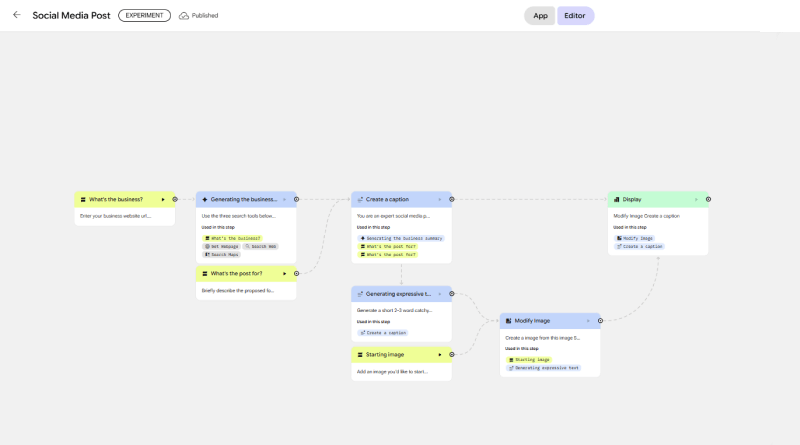
Process (AI Chain):
- Node 1 – Gemini: Reads your text and writes a detailed image prompt.
- Node 2 – Imagen: Uses that prompt to create a high-quality, relevant image.
Output: The original text and a matching image ready for posting.
It’s perfect for teams who want quick, consistent visuals without using multiple design tools.
2. The “Video Strategy” Mini-App
To be clear, Google Opal does not create or edit videos.
Instead, it helps automate the planning and strategy steps that come before production.

Process (AI Chain):
- Node 1 – Gemini: Writes a short 60-second video script.
- Node 2 – Gemini: Creates a 5-scene shot list.
- Node 3 – Gemini: Suggests three catchy hooks to start the video.
Output: A complete pre-production plan with a script, shot list, and hooks.
This helps creators save time and focus more on filming and editing.
What “Automating Applications & Websites” Really Means in Google Opal
Some people misunderstand what Google Opal can automate. Let’s clear that up.
1. Clarity Check: Google Opal IS the Application Builder
You don’t use Google Opal to automate other apps. Instead, Google Opal itself is where you build your own mini-apps.
For example, your “Blog Post Factory” or “Social Media Image” app is an application built inside Google Opal. You design how it works, connect the nodes, and Google Opal runs the automation for you.
2. A Key Distinction: Google Opal Is Not a Website Builder
Google Opal does not build or host websites. It’s not meant to replace WordPress, Wix, or any other website builder. However, it can support your website by automating content and SEO tasks such as:
- Writing SEO titles and descriptions
- Creating an FAQ schema for Google search
- Drafting “About Us” or “Services” pages
- Suggesting keywords for blog optimization
- Summarizing analytics reports for performance reviews
So while it won’t design your website, Google Opal helps keep your site updated, optimized, and efficient.
Final Verdict: Google Opal is a True No-Code AI Workflow Builder
Google Opal doesn’t replace human creativity – it enhances it. Its true power lies in connecting different AI agents like Gemini and Imagen into one continuous workflow.
With Google Opal, you don’t have to do every small task yourself. You can create systems that work for you automatically. This lets you move from being a “doer” to a director, managing how content gets created, improved, and published – all in one place.
It’s the future of digital marketing automation, giving you more time to focus on ideas and strategy while Google Opal handles the rest.
A Hosting Expert’s View: Opal’s Limitations & Scalability
As infrastructure and automation experts, we see Opal as a revolutionary tool for prototyping. However, it’s crucial to understand its limitations. Opal is a ‘closed sandbox’, it’s not for high-volume, production-scale apps. Once you’ve proven your ‘Blog Post Factory’ concept, the next step is to ‘graduate’ to a self-hosted, open-source tool like n8n on your own server for full control and scalability.
FAQ
Not yet. Google Opal focuses on creating and managing content workflows, not publishing. You can connect it with posting tools like Buffer or Hootsuite for automated publishing.
No. Zapier connects different apps, while Google Opal automates AI-based workflows inside its own system. It’s focused on content creation and strategy rather than app integrations.
No. Google Opal uses a visual drag-and-drop interface. You can create complete workflows by connecting AI nodes without writing any code.
Yes, Google Opal is currently available as a free experiment from Google Labs
Google Opal is a simple, cloud-based tool for prototyping and sharing small AI apps.
n8n is a powerful, self-hosted automation engine for building complex, production-ready workflows with full data control.



